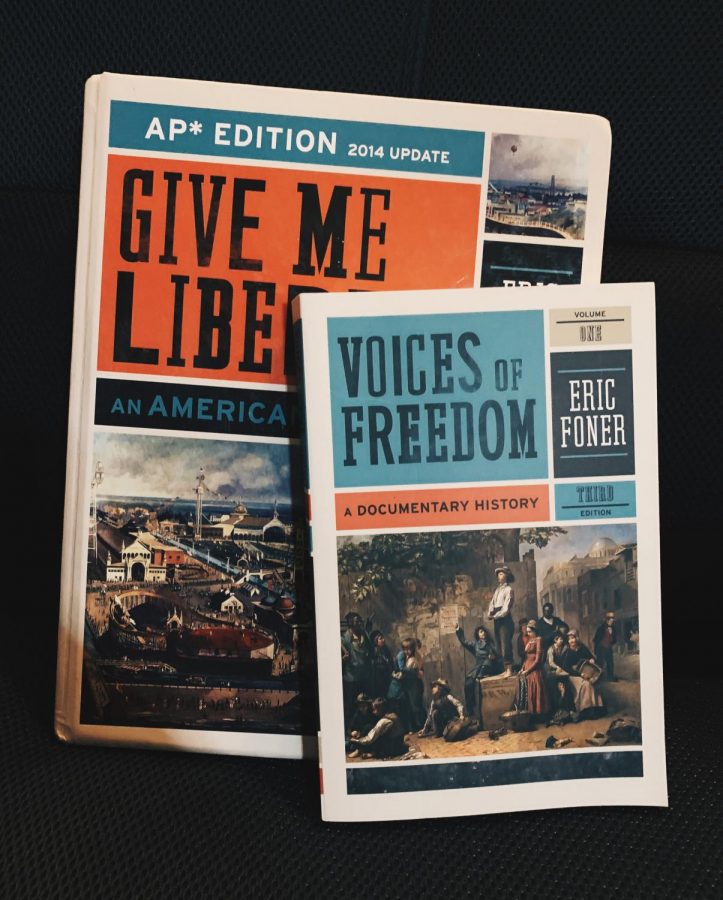Read This to Get an A+ in Your History Class
The only guide you will ever need for college prep, honors, or AP classes
Regardless if you are in Global Studies as a freshman, or taking AP United States History (APUSH) as a junior, there are going to be some tips in this article that will help you succeed in your class this year. History may seem intimidating, especially with historical figures, dates, and events that you have to memorize, but I guarantee you it is rewarding once you figure out a process that works for you.
History is too extensive for all the tips to be compiled into one article; however, this article does touch on some general tips to help you understand and visualize the events you learn in class.
Read your textbook and take notes as you go. This is a given if you are taking AP classes. However, if you are taking Global Studies or Modern Global Studies, reading the textbook is a good way to review the content you learned in class. Start by reading your textbook, especially if you want to take an AP history course in the future. Your textbooks are simpler and easier to understand than the college-level textbooks you may encounter in the future. So, it is a good idea to get into the habit of reading the textbook and taking notes. It also provides you an opportunity to find out which note-taking strategy works best for you.
Ms. Moir, an AP United States History teacher, says this about being an active reader and note taker:
Be an “active” reader/note taker. Whether you are reading primary sources or taking reading notes—underlining, annotating, etc. It forces you to interact with what you are reading. “Active” reading helps you to think about what you know and more importantly what you don’t—so that you can then reach out to your teachers for help.
This one is going to be important, so pay attention. Try to understand the cause and effect or the event and impact relationship of an event. All this means is that you should understand the cause of one event, and the effect it has on another event. History is just a long chain of dominoes, and each domino that tips over affects the domino in front of it— just like how each event in history is the catalyst for another.
Take the Reformation for example. To test if you understand the topic, ask yourself if you understand what caused the Reformation and the impact of the era. In the example, it will be important to understand who Martin Luther is and why he criticized the selling of indulgences. It is equally as important to understand the aftermath of how the Reformation led to the Thirty Years’ War or to the rise of Protestantism. We can continue this pattern and note that the rise of Protestantism led to the Catholic or Counter-Reformation, leading to Ignatius Loyola’s creation of the Jesuits, which led to Catholic missionaries being sent to Japan or the conquest of native tribes in America. Did you see the chain of events I outlined? Understanding the before and after of an event helps you visualize a timeline of events in the course.
Kush Maisuria, a student who took AP Modern European History (APMEH) and is taking AP United States History says, “Try to make connections between everything, especially between different time periods and events.”
Making meaningful connections not only enhances your own understanding of the content, but also helps you earn the complexity point on the AP rubric for long essay and document based questions. If you are not taking an AP history course, you can still make connections in the conclusion paragraph to show your teacher how you can tie together events through different time periods in history.
BIG ideas! Yes, I capitalized all the letters for a reason. There is so much to learn in history, so do not force yourself to memorize super specific and insignificant details. Do not memorize Thomas Jefferson’s favorite food or the fact that Martin Luther was a madman. Focus on the general trends and the continuity and changes in history.
“Every event in history is connected in some way, so in order to understand the specifics you have to understand the big picture,” says Claire Orriss, a senior who took APMEH in sophomore year and APUSH in junior year, receiving 5 on both exams.
Be proactive. I know you have heard this tip over and over again, but this is not exclusive to only asking your teachers questions. I understand that some students might be uncomfortable to ask a question, or you could be so lost that you do not even know what to ask (do not worry, I have been in this situation way too many times). In this instance, look the topic up yourself! We live in the age of technology, Google, Quizlet, and YouTube; you can always find what you are looking for if you do a quick search. If you are in APUSH or APMEH, use Tom Richey, Crash Course, Heimler History, and Jcoz Productions. College Board has its own videos as well on AP Classroom.
Mrs. Sousa, an AP European history teacher, says that her “biggest tip to succeed in any history class is to do your assigned reading. Teachers assign history reading to help to preview new material, and all students are always more prepared for class, and get the most out of instruction if they have read before.”
History can be daunting when you first approach it. However, being able to understand history and relate it to the world around us is truly a rich and satisfying experience.
If you’re a freshman, and you have not read our freshmen transition article, feel free to take a read.

Allen is the Advertising Editor for Prospect. This is his second year on the Prospect staff.






